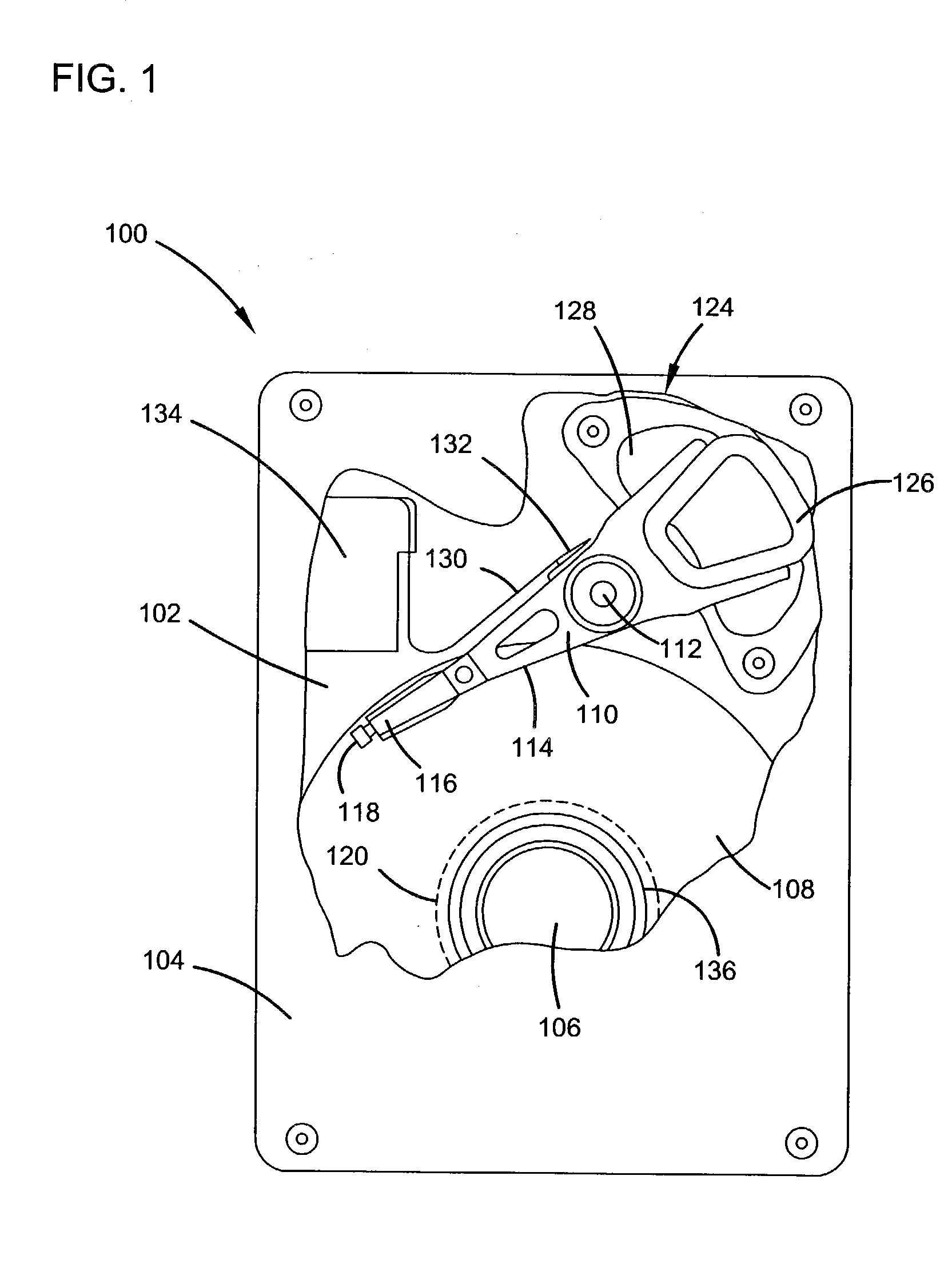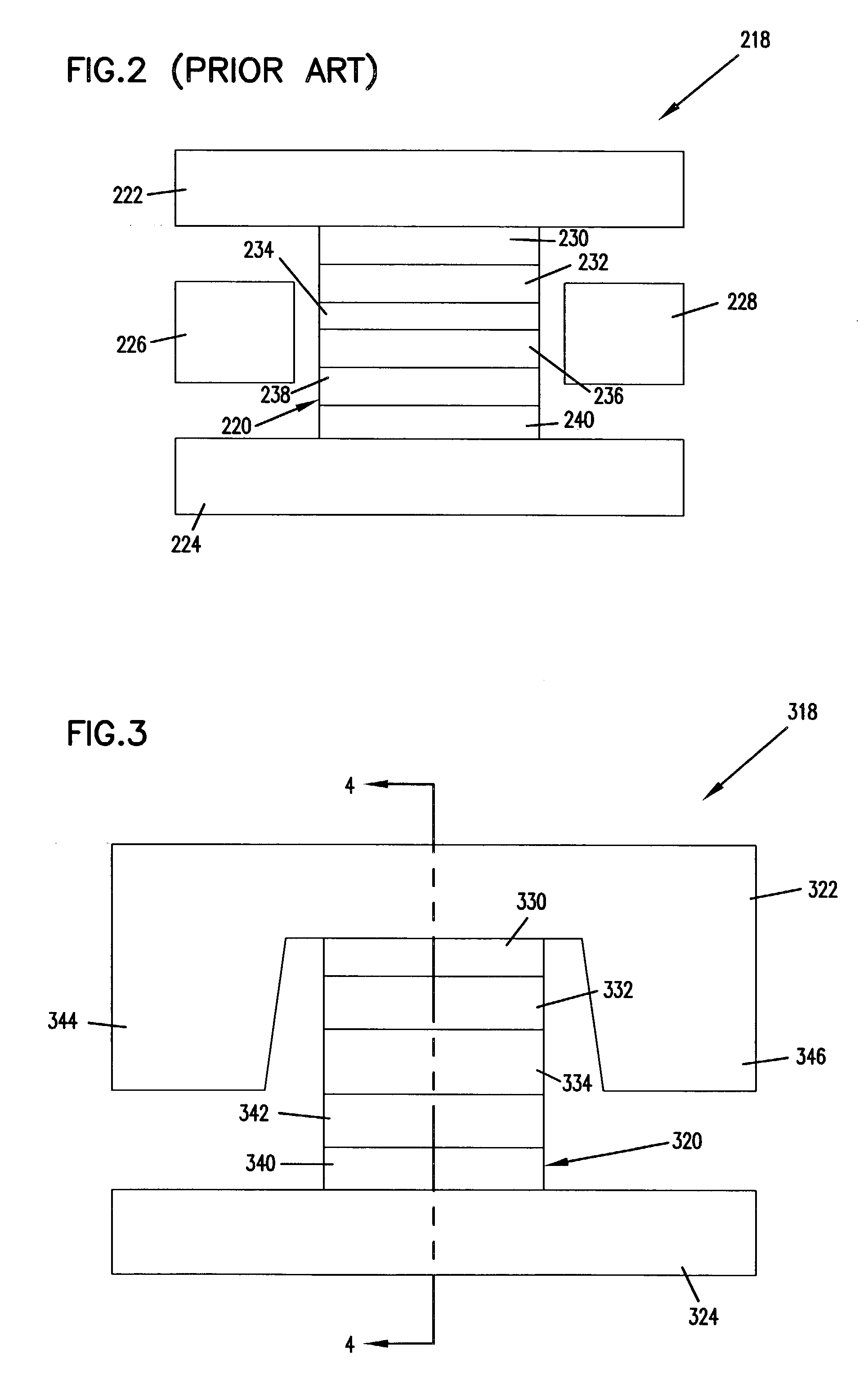Structure to achieve sensitivity and linear density in tunneling GMR heads using orthogonal magnetic alignments
a technology of orthogonal magnetic alignment and structure, applied in the field of magnetic transducers, can solve the problems of reducing the resistance and magnetoresistance of the stack, restricting the spacing of shields to shields, and the spin valves are not well suited to high linear density applications, so as to achieve the effect of improving sensitivity and linear density of the sensor structure and more sensitivity
- Summary
- Abstract
- Description
- Claims
- Application Information
AI Technical Summary
Benefits of technology
Problems solved by technology
Method used
Image
Examples
embodiment 700
[0045]Another tri-layer CPP head embodiment 700, shown in FIG. 8, utilizes an in-stack bias scheme to make the two sensing layer biased orthogonal. Head 700 comprises a basic Trilayer CPP stack of free layers 730, 732 and an oxide spacer 734. Soft magnetic layers 770,772 are stabilized by AFM layers 760, 762, which provide unidirectional exchange fields at the FM / AFM interfaces. The FM / AFM layer pair is referred to as a soft-bias layer. This soft bias layer should be placed both on top of and underneath free layers 730, 732 with nonmagnetic spacer layers 780, 782. The magnetic flux from the soft-bias layer should be smaller than the magnetic flux of the free layer, resulting in a complete flux balanced structure that provides maximum magnetic stability performance. The structure of FIG. 8 may also offer several process advantages since there is no need to have lateral electrical insulation as in other embodiments. Seed layers and cap layers may also be needed to protect the stack.
[0...
embodiment 800
[0049]Another alternate stack embodiment 800 takes advantage of the ballistic magnetoresistance (BMR) in magnetic nanoconstrictions. It has been shown that BMR values of over 3000% can be achieved at room temperature in Ni nanocontacts at switching fields of only a few hundred oersteds. These values are two orders of magnitude larger than the magnetoresistance currently obtainable in standard CPP GMR and TMR designs. FIG. 10 shows a schematic of a stack 800 utilizing the ballistic MR effect. The stack consists of two free layers 832 and 842 separated by an insulating layer 834 with a nanobridge 836 in the insulating layer connecting the two free layers 832 and 842. The nanobridge 836 may be as small as 10 nm. Stack 620 includes a cap layer 830 contacting top shield 822, a first free layer 832, an insulating layer 834, a nanobridge in the insulating layer 834, a second free layer 842, a seed layer 820, and an electrode contacting bottom shield 824.
embodiment 900
[0050]A further alternate stack embodiment 900, shown in FIG. 11, consists of multilayer free layers. In this case the barrier consists of an insulating, semiconducting, or non-magnetic metal spacer layer and each free layer consists of a series of ferromagnetic layers separated by non-magnetic spacer layers. This configuration leads to very strong ferromagnetic couplings between the ferromagnetic layers as a well as enhanced GMR / TMR effect. FIG. 11 shows a schematic of a stack 900 utilizing multilayer free layers. Stack 900 includes a cap layer 930 contacting a top shield 922, a first free layer 933, a semi-conducting layer or a non-magnetic metal layer 934, a second free layer 942, a seed layer 920, and an electrode-contacting bottom shield 924. The first and second free layers 933, 942 are further sub-divided into n repeat units 950 of ferromagnetic / non-magnetic spacer layers 952, 954. The non-magnetic spacer layer can be chosen to be any of the following: Cu, Ag, CuAg, CuAu, Ru,...
PUM
| Property | Measurement | Unit |
|---|---|---|
| thickness | aaaaa | aaaaa |
| magnetoresistive | aaaaa | aaaaa |
| magnetization | aaaaa | aaaaa |
Abstract
Description
Claims
Application Information
 Login to View More
Login to View More - R&D
- Intellectual Property
- Life Sciences
- Materials
- Tech Scout
- Unparalleled Data Quality
- Higher Quality Content
- 60% Fewer Hallucinations
Browse by: Latest US Patents, China's latest patents, Technical Efficacy Thesaurus, Application Domain, Technology Topic, Popular Technical Reports.
© 2025 PatSnap. All rights reserved.Legal|Privacy policy|Modern Slavery Act Transparency Statement|Sitemap|About US| Contact US: help@patsnap.com



